Vice Admiral Horatio Nelson is one of Britain’s most heroic figures. Born in 1758, he was the son of a Norfolk clergyman and joined the Royal Navy as a midshipman at the age of 12. He became a naval captain by the age of 21 and a household name throughout Europe at 39.
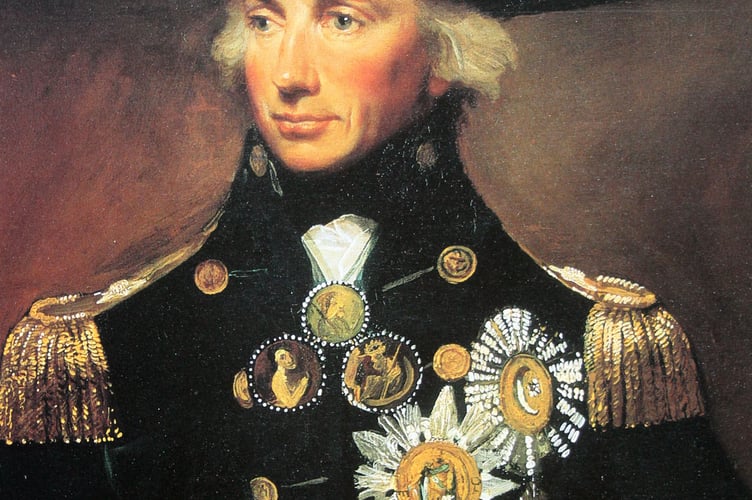
In 1802 Great Britain signed a peace treaty with France which brought to a temporary end a war that had raged for nine years. It was during this period of peace that Nelson made his triumphant tour through Wales with Sir William and Lady Emma Hamilton.
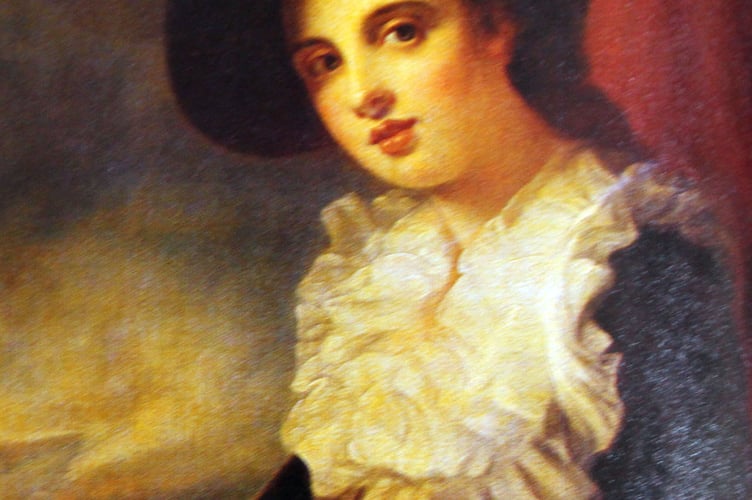
Travelling in horse drawn carriages they set out from Nelson’s country seat at Merton in Surrey on 21 July 1802, bound for Oxford on the first leg of their 250 mile journey. And arrived at Ross-on-Wye four days later.
They spent a night at the Swan Inn and prepared to continue to Monmouth by carriage, but on hearing that they could be conveyed there by boat Nelson expressed his preference for that mode of travel.
To their surprise, when they were about one mile from Monmouth, the peace was shattered by the sound of canon fire from the Kymin, a hill overlooking the town. From Dixton Church to the Wye Bridge there were crowds of people lining the river bank, shouting and cheering their welcome and Nelson acknowledged them as he stood bare headed in the prow of the boat.
At Wye Bridge Nelson and the Hamiltons were met by members of the Corporation who had been hurriedly assembled. They were all in full regalia and accompanied by the band of the county militia.
A procession was formed, and the band played ‘Rule Britannia’ and ‘The Conquering Hero’ as they marched to the Beaufort Arms, in Agincourt Square, where the visitors had arranged to stay the night. On their arrival, Nelson made a short speech in which he commented, “To be known at such a little gut of the river as the Wye fills me with astonishment.”
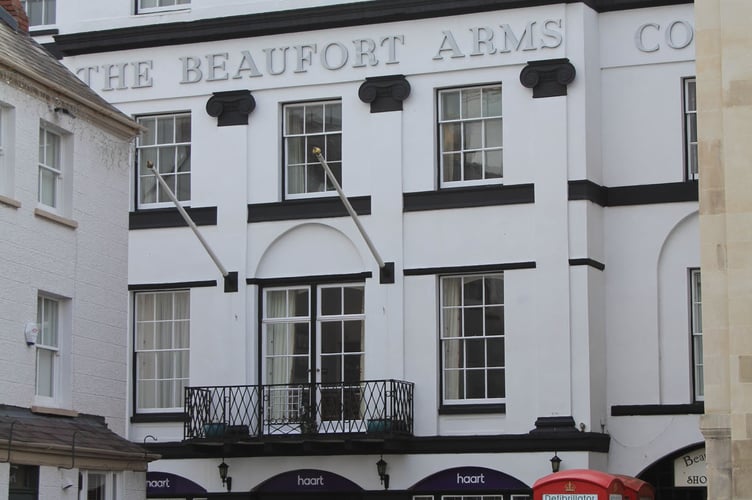
His well known association with Monmouth just rests upon two short visits that he made to the town during the period when he was idolised by the British nation. On this first occasion he promised to spend some time in Monmouth during their return journey, and that he would write to the Mayor, giving him several days notice of his intended arrival.
The next day, their journey to Abergavenny in a horse drawn coach took 6 hours for the roads were in very poor condition. Today, this journey, travelling by car along the dual carriageway at 50-60 miles an hour, takes just 30 minutes.
They changed horses in Abergavenny and then followed the road into Brecknockshire, and stayed a night with Admiral John Gell who lived near Llangattock in an elegant house on the banks of the Usk. Next day they travelled to Brecon, which was then one of the largest towns in Wales with around 2,000 inhabitants.
A deputation of local farmers expressed their pleasure at meeting Nelson and one man was even heard to exclaim, “Now I can die in peace for I have seen our saviour and brave defender.”
They continued their journey via Merthyr Tydful, Llandovery, Carmarthen, Narberth, Haverfordwest to reach Milford Haven, where the port had been developed by Sir William Hamilton and his business partner Charles Grenville. Nelson described Milford Haven as one of the best natural harbours he had ever seen.
Their return journey via Swansea , Margam Abbey, Cowbridge, Cardiff and Newport brought them back into Monmouthshire and on to Chepstow, where they stayed at the ‘Three Cranes’ in Beaufort Square (now a private house). Word was brought to Nelson that one of his old sailors was outside. Nelson told a waiter to take the man a bowl of soup, but he neglected to provide a spoon, so the man ladled the soup with his tobacco box. Nelson went out to see him and on recognising him as one of his sailors, he gave him a guinea.
They then travelled up the Wye Valley, and visited Mr and Mrs Wells, the wealthy owners of the Piercefield Estate. Then during the evening of Wednesday, August 18th they arrived in Monmouth and dined at the Beaufort Arms, where a public dinner was held in Nelson’s honour. In replying to the toast, he referred to the courage of his men and that it was needed in every aspect of life.
The following morning at nine o’ clock amidst the ringing of bells, the party set off in two carriages that were pulled by four horses apiece, and they wound their way up the steep ascent to the Kymin, watched by crowds of people. The Mayor and Corporation were there before them and a fine breakfast was served in the Round Tower accompanied by the Mayor and Corporation.
Nelson then inspected the Naval Temple, which had been erected in 1800 to honour the sixteen British admirals who had distinguished themselves in the latter part of the 18th century. It was commented by Nelson that this building was the only monument of its kind erected to the English Navy in the whole of the kingdom.
He decided that they should not ride in the carriage, back to Monmouth, but return on foot in order to pay tribute to the warmth of his welcome by the people who lined the route all the way.
That evening a grand dinner was held at the Beaufort Arms in Nelson’s honour, and dressed in a blue coat with gold epaulets and wearing the Order of the Bath, he took his seat beside Lady Hamilton. She assisted him by cutting his food, for with only one arm he would have found it difficult.
After the dinner they moved to a summerhouse in the walled garden of Colonel Lindsay’s house in Monnow Street to pass the rest of the evening. This garden was later renamed ‘Nelson’s Garden’ to mark this visit and the present Memorial Pavilion was erected in 1840 to replace the original one. It houses the original seat on which Nelson sat and a plaque to commemorate his visit.
This garden is now managed by the Nelson Garden Preservation Trust and is open on Fridays 2-4pm between April and September. It is located behind Monnow Street and accessed by a footpath from Monnow Street Car Park.
I regret that I was not present when a bicentenary re-enactment of Nelson’s visit to Monmouth took place on August 25, 2002. The actors, dressed as Horatio Nelson Lord and Lady Hamilton, travelled down the Wye to arrive in Monmouth in the Victory’s actual cutter with its Royal Naval Crew, and this very special event was shown on television.
We can be proud of the fact that Monmouth has a remarkable collection of Nelson relics which were acquired by Lady Georgina Llangattock, the mother of Charles Rolls. She had been a passionate admirer of Nelson and collected anything to do with this hero of Trafalgar; pictures of him, his sword, his Bible, letters exchanged with Lady Hamilton, and cups plates and glasses commemorating his battles.
All this was amassed during the late nineteenth and twentieth centuries and on her death it was given to the town. It is a collection, second only to the National Maritime Museum in Greenwich. Even Nelson’s glass eye was claimed to exist and locks of his hair (reputedly) were sold at impressive prices. Unfortunately, at present the Nelson collection is in storage, because the museum was closed during the COVID-19 pandemic, and a five year project supported by the National Heritage Fund has been set up to create a new museum at Shire Hall by 2027.

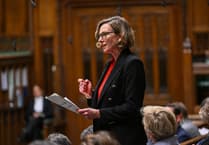
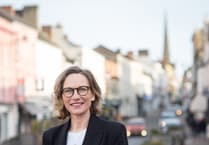
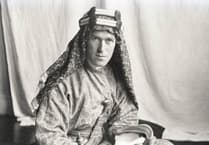

Comments
This article has no comments yet. Be the first to leave a comment.